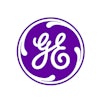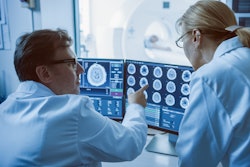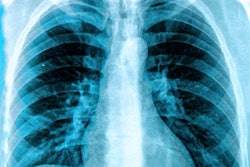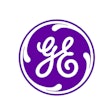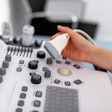A significant percentage of imaging exams ordered in emergency departments (EDs) may be inappropriate, according to new research published April 26 in Emergency Radiology.
In a retrospective analysis of orders from an ED at an urban academic center, a multi-institutional research team also found that inappropriate imaging orders resulted in detection of significant findings much less frequently than appropriate exams.
“Appropriately ordered exams were nearly three times more likely to yield significant findings that were consistent with the initial suspicion, compared to inappropriate orders,” wrote the group led by Martina Zaguini Francisco, MD, of the Universidade Federal de Ciencias da Saude de Porto Alegre in Brazil and senior author Bruno Hochhegger, MD, PhD, of the University of Florida, and colleagues. “These inappropriate orders resulted in no significant findings in more than 60% of cases across all modalities.”
In an effort to evaluate the appropriateness and outcomes of ultrasound, CT, and MR exams ordered for adult ED patients at a tertiary care urban academic center, the researchers retrospectively reviewed consecutive orders from January to March 2019.
They used the American College of Radiology (ACR) Appropriateness Criteria to classify imaging orders as either appropriate or inappropriate. In cases that involved clinical scenarios not covered in the Appropriateness Criteria, two radiologists judged the cases in consensus.
The study included 330 consecutive ultrasound, 330 consecutive CT, and 330 consecutive MR exams. Of the 990 orders, only 59.3% were considered to be appropriate.
On a modality basis, 59.4% of ultrasounds, 29.1% of CT exams, and 33.3% of MR exams were inappropriate, according to the researchers.
| Outcomes of ED imaging orders by modality | ||||||
|---|---|---|---|---|---|---|
| Inappropriate ultrasound | Appropriate ultrasound | Inappropriate CT |
Appropriate CT | Inappropriate MRI | Appropriate MRI | |
| Final reports demonstrating findings compatible with the initial diagnosis | 14.3% | 45.5% | 14.6% | 46.6% | 21.8% | 56.3% |
| Final reports showed no abnormalities | 65.8% | 38.8% | 62.5% | 34.2% | 61.8% | 38.7% |
| * All differences were statistically significant (p < 0.001). | ||||||
Delving further into the data, the researchers found that approximately half of all inappropriate exams, including 58.1% of ultrasound orders, 61.4% of CT orders, and 57.2% of MRI orders were categorized as “usually not appropriate” under the Appropriateness Criteria. They also noted that 25.7% of ultrasound, 15.2% of CT, and 13% of MR were considered unnecessary imaging.
“Besides the low diagnostic yield, inappropriate orders also contribute to the increasing healthcare cost burden and expose patients to unnecessary ionizing radiation,” the authors wrote. “The reasons behind the high number of inappropriate orders are multifactorial, but concerns of missing a low probability diagnosis and malpractice consequences likely top the list.”
By modality, neuro (130 exams) and gastrointestinal (95 exams) were the most commonly imaged systems for CT, while genitourinary (132 exams) and gastrointestinal (121 exams) topped the list for ultrasound. Meanwhile, neuro (273 exams) and gastrointestinal (37 exams) also topped the list for MRI.
The researchers highlighted educational gaps as another important problem leading to inappropriate imaging orders.
“Despite the wide availability and free access to the [ACR Appropriateness Criteria], a lack of awareness likely contributes to their underutilization, resulting in not only overuse of imaging but also suboptimal modality choices, often leading to multiple orders during the same visit,” the authors wrote. “For instance, all CT and MR orders for syncope in our study were inappropriate according to the [Appropriateness Criteria]; none of which yielded positive findings.”
The full article can be found here.



